Hurricane-Proof Shelters: Lida Group’s Prefab Sandwich Panel Construction Enables Rapid Deployment of Secure Mobile Units
2025-Aug-06 14:18:18
By Admin
1. Introduction
Hurricanes, with their ferocious winds, torrential rains, and destructive storm surges, pose a constant and escalating threat to coastal communities and regions prone to such natural disasters. Each year, these powerful storms leave a trail of devastation, destroying homes, infrastructure, and livelihoods, and often resulting in loss of life. In the aftermath, the need for safe, secure, and quickly deployable shelters becomes paramount to protect survivors and provide a sense of stability amid chaos.
Traditional shelter solutions, however, often fall short in the face of hurricanes. Many are either too fragile to withstand the extreme forces of these storms or take too long to construct, leaving vulnerable populations exposed for extended periods. This is where Lida Group’s innovative approach comes into play. Through their prefab sandwich panel construction, the company has developed hurricane-proof shelters that not only offer exceptional durability and safety but also enable rapid deployment of secure mobile units. This article explores the features, benefits, applications, and impact of these shelters in hurricane-prone areas.
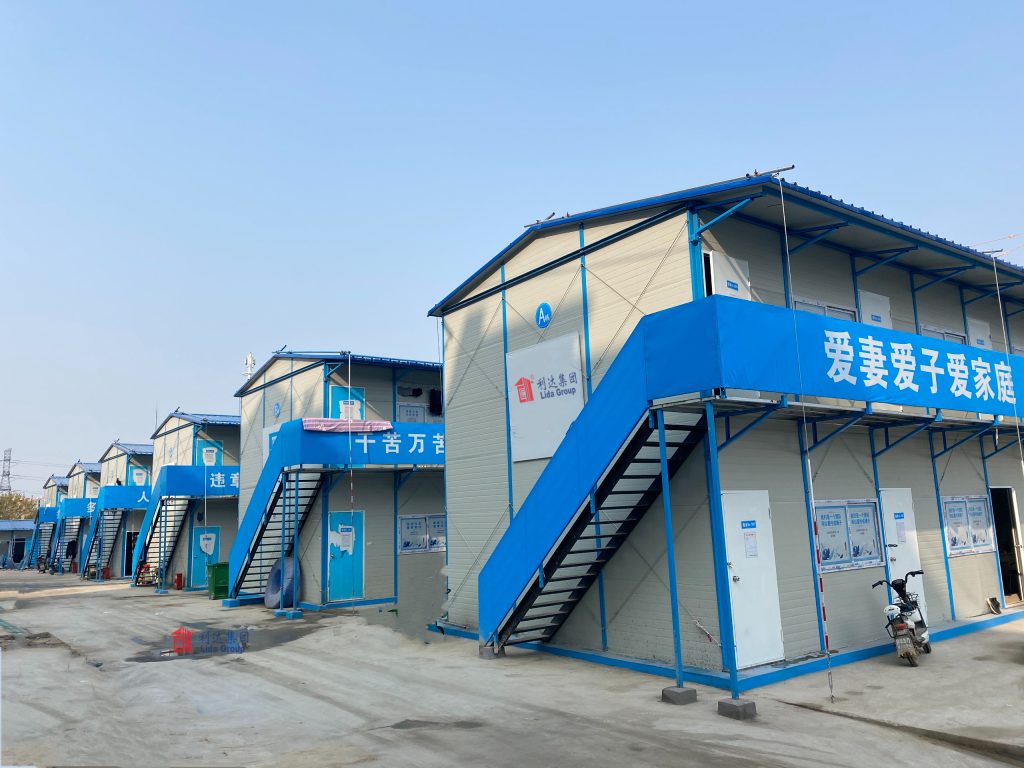
2. The Devastation of Hurricanes and the Need for Reliable Shelters
2.1 The Destructive Power of Hurricanes
Hurricanes are categorized by their wind speeds, with Category 5 storms packing winds of 157 miles per hour (252 kilometers per hour) or more. These winds can tear roofs off buildings, uproot trees, and hurl debris with lethal force. The accompanying storm surges, which are walls of water pushed ashore by the hurricane, can flood coastal areas, submerging homes and infrastructure and causing widespread destruction.
Heavy rainfall from hurricanes leads to flash floods and riverine flooding, further compounding the damage. In addition to physical destruction, hurricanes disrupt essential services such as electricity, water, and healthcare, making it even more challenging for affected communities to recover. The need for shelters that can withstand these extreme conditions is not just a matter of convenience but of survival.
2.2 Limitations of Traditional Hurricane Shelters
Traditional hurricane shelters have several limitations. Many are permanent structures built to specific codes, but they are often few in number and located in fixed positions, which may not be accessible to all residents during a storm. In some cases, these permanent shelters are overcrowded, increasing the risk of injury or the spread of diseases.
Temporary shelters, such as tents or makeshift structures, are even less reliable. They offer little protection against high winds, rain, or flying debris, and can collapse under the weight of storm surges or heavy rainfall. Moreover, setting up these temporary shelters after a hurricane can be time-consuming, especially when infrastructure is damaged and access to the affected area is limited.
2.3 The Urgency of Rapid Deployment
In the immediate aftermath of a hurricane, time is of the essence. Survivors may be trapped in damaged homes or forced to seek refuge in unsafe locations. Rapid deployment of secure shelters can mean the difference between life and death. It provides a safe haven where people can seek protection, receive medical assistance, and access basic necessities such as food and water.
Rapid deployment also helps to stabilize the affected area, reducing the risk of looting and providing a focal point for relief efforts. Additionally, having shelters in place quickly can help to reduce the psychological impact of the disaster, giving survivors a sense of security and hope.
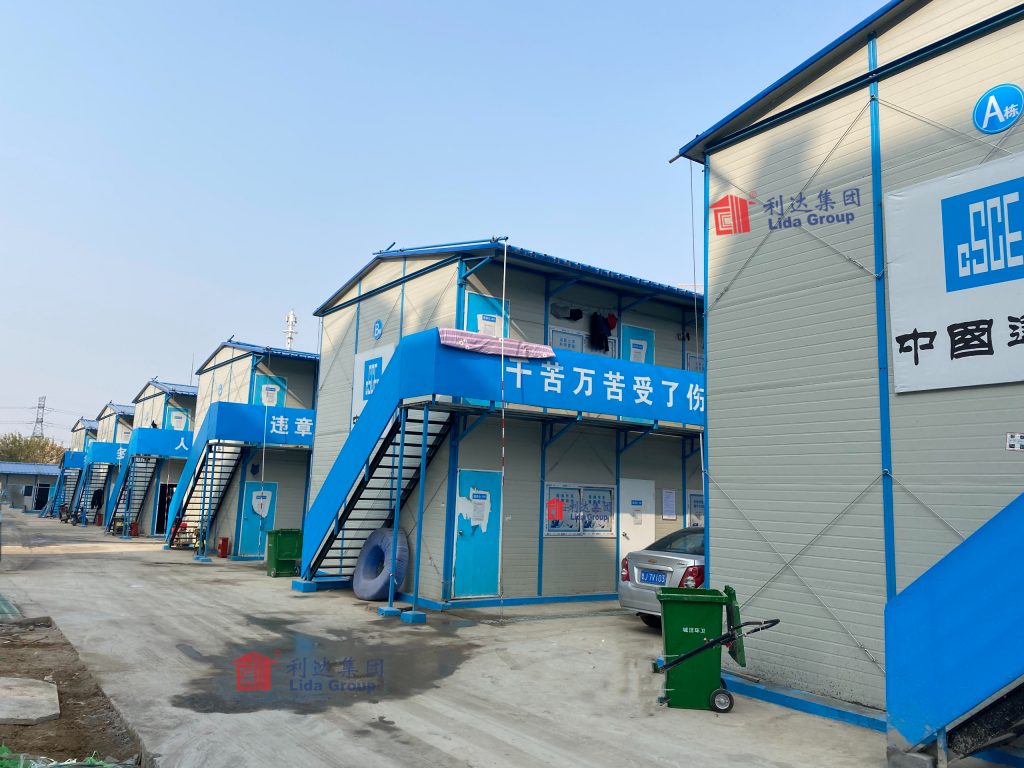
3. Lida Group’s Prefab Sandwich Panel Construction: The Foundation of Hurricane-Proof Shelters
3.1 Composition and Structure of Sandwich Panels
Lida Group’s hurricane-proof shelters are built using prefab sandwich panels, which are the key to their strength and durability. These panels consist of three layers: two outer layers of high-strength material, typically galvanized steel or aluminum, and a core layer of insulation material. The outer layers provide structural integrity and resistance to impact, while the core layer offers insulation and additional strength.
The galvanized steel used in the outer layers is treated to resist corrosion, ensuring that the panels can withstand the harsh coastal environment, including exposure to saltwater. The insulation core, which can be made of materials such as polyurethane foam or rock wool, not only provides thermal insulation but also enhances the panel’s rigidity and resistance to bending and compression.
The panels are manufactured in a controlled factory environment, ensuring consistent quality and precision. They are then transported to the site and assembled quickly, making the construction process efficient and reliable.
3.2 Engineering for Hurricane Resistance
The design of Lida Group’s prefab sandwich panels is engineered specifically to withstand the extreme forces of hurricanes. The panels are tested to meet or exceed strict hurricane resistance standards, including wind load ratings and impact resistance.
The connection points between panels are reinforced to ensure that the shelter remains intact even under high winds. The roof and walls are designed to shed water quickly, preventing water damage and leaks. Additionally, the overall structure of the shelter is engineered to distribute wind forces evenly, reducing the risk of structural failure.
The mobile units are also designed to be anchored securely to the ground, using a variety of anchoring systems depending on the soil conditions. This prevents the shelter from being lifted or moved by strong winds, ensuring that it remains in place during the storm.
3.3 Prefabrication: Ensuring Quality and Speed
Prefabrication is a critical aspect of Lida Group’s construction process. By manufacturing the sandwich panels and other components in a factory, the company can ensure that each part meets strict quality standards. This eliminates the variability that can occur with on-site construction, where weather conditions and human error can affect the quality of the finished product.
Prefabrication also allows for mass production, which means that large numbers of shelters can be produced quickly and efficiently. The components are designed to be easy to transport and assemble, with minimal on-site work required. This makes it possible to deploy the shelters rapidly to areas affected by hurricanes.
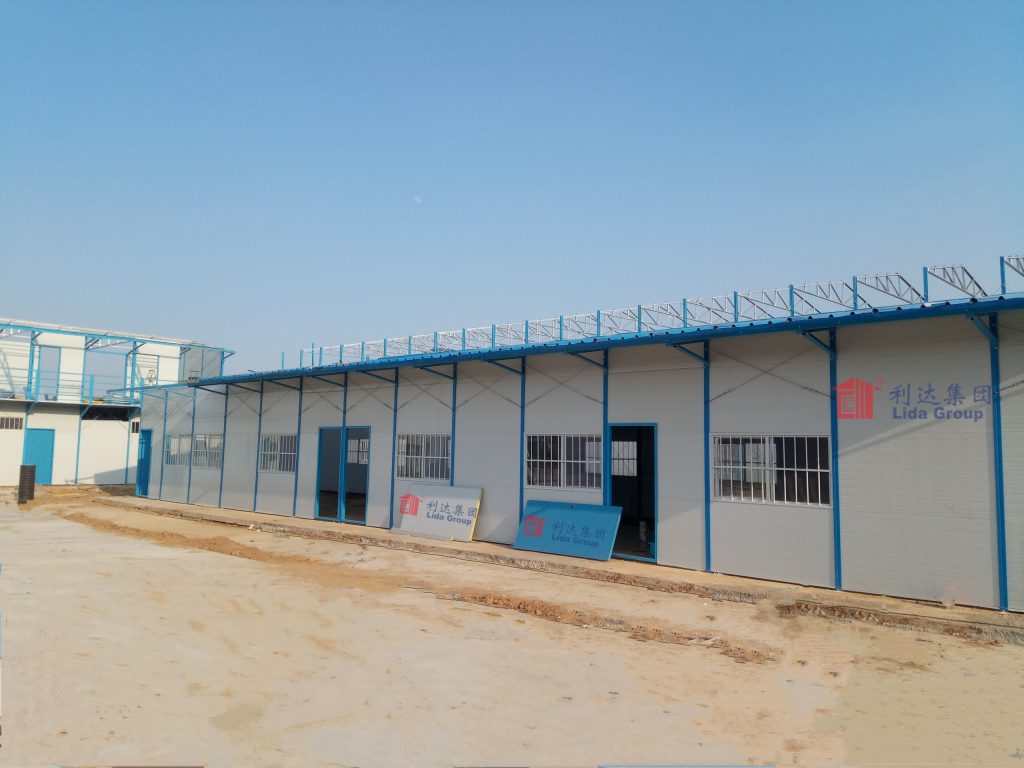
4. Features of Lida Group’s Hurricane-Proof Mobile Units
4.1 Portability and Mobility
One of the key features of Lida Group’s hurricane-proof shelters is their portability and mobility. The mobile units are designed to be transported easily by truck, trailer, or even helicopter, making them accessible to remote or hard-to-reach areas. This is particularly important in the aftermath of a hurricane, where roads and infrastructure may be damaged.
The shelters can be deployed in a variety of locations, including open fields, parking lots, and even on uneven terrain. Their mobility also allows them to be relocated as needed, depending on the changing needs of the relief effort.
4.2 Structural Integrity and Safety
The structural integrity of Lida Group’s hurricane-proof shelters is paramount. The prefab sandwich panels, along with the reinforced connections and anchoring systems, ensure that the shelter can withstand winds of up to 200 miles per hour (322 kilometers per hour) or more, depending on the model.
The shelters are also designed to be fire-resistant, with the insulation core and outer layers meeting fire safety standards. This reduces the risk of fire, which is a common hazard in post-disaster situations.
In addition to withstanding external forces, the shelters are designed to provide a safe internal environment. They are equipped with ventilation systems to ensure adequate air circulation, and the materials used are non-toxic and safe for human occupancy.
4.3 Basic Amenities for Comfort and Functionality
While the primary function of hurricane-proof shelters is to provide safety, Lida Group’s mobile units also include basic amenities to ensure the comfort and functionality of the occupants. These amenities can include:
- Sleeping areas: The shelters can be configured to provide individual or communal sleeping spaces, with comfortable bedding.
- Sanitation facilities: Some models include built-in toilets and showers, or connections for portable sanitation units.
- Kitchen facilities: Small kitchenettes with basic cooking equipment, such as a stove and refrigerator, allow occupants to prepare food.
- Electrical systems: The shelters are wired for electricity, with outlets for lighting, charging devices, and other electrical appliances. They can be connected to a generator or to the local power grid once it is restored.
- Storage space: Built-in storage cabinets and shelves provide space for personal belongings and relief supplies.
These amenities help to make the shelters more livable, allowing occupants to maintain a basic standard of living while they recover from the hurricane.
4.4 Adaptability to Different Needs
Lida Group’s hurricane-proof mobile units are highly adaptable to different needs. They can be configured in a variety of sizes and layouts, depending on the number of occupants and the specific requirements of the relief effort.
For example, small units can be used to house individual families, while larger units can serve as communal shelters, medical clinics, or command centers for relief workers. The modular design of the shelters allows for easy expansion or reconfiguration, making them suitable for a wide range of applications.
The shelters can also be customized to meet the specific needs of different regions. For example, in areas prone to storm surges, the shelters can be elevated on stilts to prevent flooding. In colder climates, additional insulation can be added to ensure warmth.
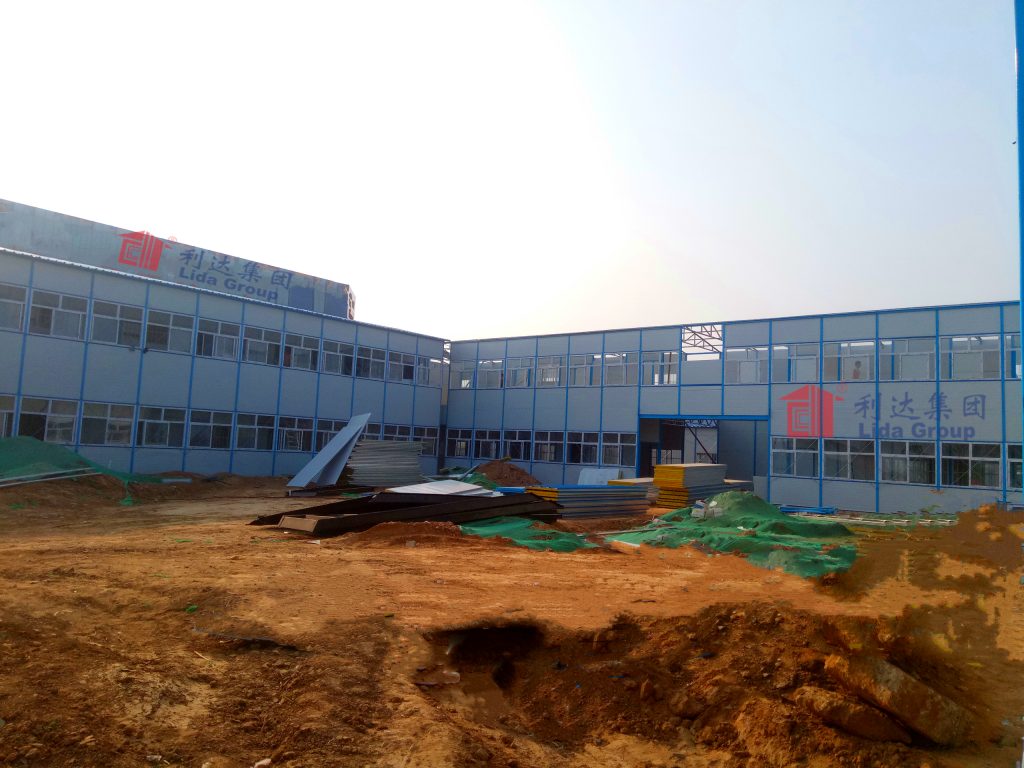
5. Rapid Deployment Process: From Factory to Field
5.1 Pre-Disaster Preparation and Stockpiling
To ensure rapid deployment in the event of a hurricane, Lida Group works with governments, relief organizations, and other stakeholders to pre-position shelters in strategic locations. These stockpiles are located in areas that are likely to be affected by hurricanes, making it possible to deploy the shelters quickly once a storm hits.
Pre-disaster preparation also includes training personnel on the assembly and installation of the shelters. This ensures that there is a skilled workforce ready to deploy the shelters as soon as they are needed.
5.2 Transportation and Logistics
The transportation of Lida Group’s hurricane-proof shelters is designed to be efficient and flexible. The prefab components are lightweight and compact, making them easy to load onto trucks, trailers, or cargo planes. The company works with logistics partners to ensure that the shelters are transported to the affected area as quickly as possible, even in challenging conditions.
In some cases, helicopters may be used to transport the shelters to remote areas that are inaccessible by road. The mobile units are also designed to be off-loaded quickly, with minimal equipment required.
5.3 On-Site Assembly and Installation
The on-site assembly and installation of Lida Group’s hurricane-proof shelters is a quick and efficient process. The prefab components are designed to fit together easily, with simple connections that require minimal tools and labor.
A team of trained technicians can assemble a single shelter in a matter of hours, and a large number of shelters can be installed in a matter of days. The anchoring systems are also designed to be easy to install, ensuring that the shelters are securely fastened to the ground.
This rapid assembly process means that the shelters can be operational quickly, providing much-needed protection to survivors.
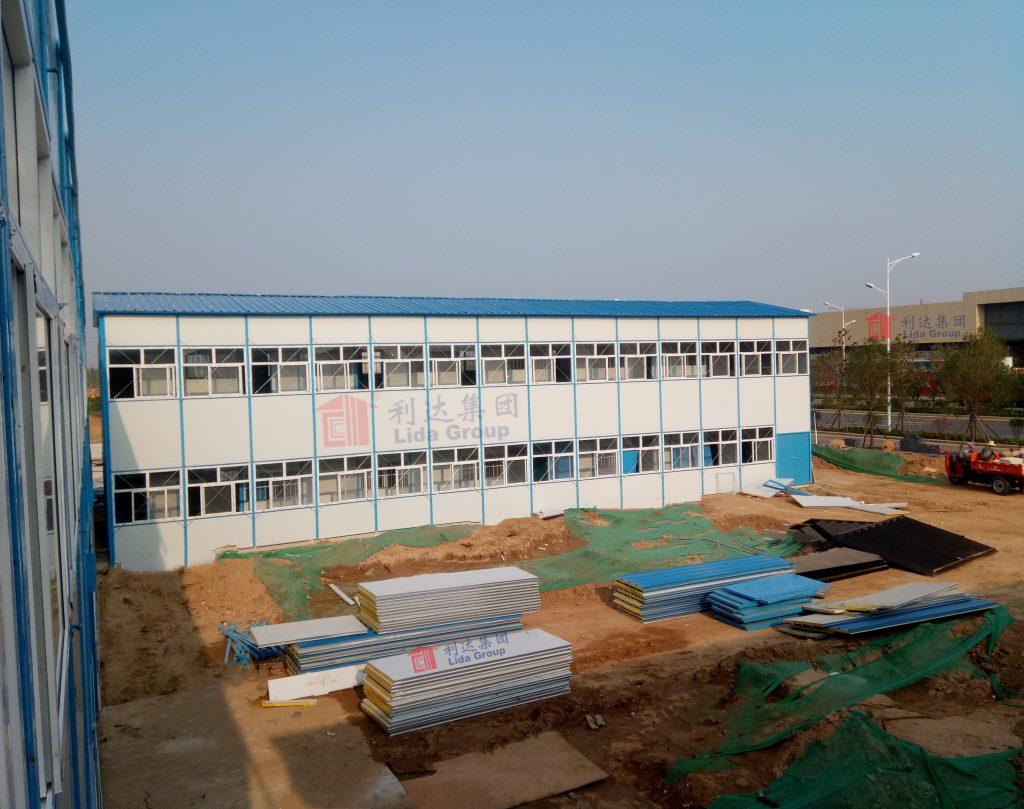
6. Case Studies: Successful Deployment in Hurricane-Affected Areas
6.1 Hurricane Katrina (2005) Aftermath
In the aftermath of Hurricane Katrina, which devastated the Gulf Coast of the United States in 2005, Lida Group’s prefab sandwich panel shelters were deployed to provide housing for displaced residents. The shelters were able to withstand the strong winds and flooding that followed the hurricane, providing a safe haven for thousands of people.
The rapid deployment of the shelters helped to reduce the overcrowding in existing shelters and provided a more comfortable living environment for survivors. The modular design of the shelters allowed for easy expansion, as more and more people needed housing. The basic amenities, such as sanitation facilities and electrical systems, helped to improve the quality of life for the occupants while they waited for their homes to be rebuilt.
6.2 Hurricane Maria (2017) in Puerto Rico
Hurricane Maria, which struck Puerto Rico in 2017, caused widespread destruction, leaving much of the island without power or water. Lida Group’s hurricane-proof shelters were deployed to the island to provide emergency housing for those affected by the storm.
The shelters were able to withstand the strong winds and heavy rainfall of the hurricane, and their portability allowed them to be deployed to remote areas that were hard to reach. The electrical systems in the shelters were connected to generators, providing much-needed power for lighting and charging devices. The sanitation facilities helped to prevent the spread of diseases in the aftermath of the storm.
The deployment of the shelters was praised by local officials and relief organizations, who noted that they provided a safe and secure environment for survivors and helped to speed up the recovery process.
6.3 Recent Hurricane Events in the Caribbean
In recent years, several hurricanes have struck the Caribbean, causing significant damage to islands such as Barbuda, Dominica, and the Bahamas. Lida Group’s hurricane-proof shelters have been deployed to these areas to provide emergency housing and support the recovery efforts.
In Barbuda, which was nearly destroyed by Hurricane Irma in 2017, the shelters were used to house residents while their homes were being rebuilt. The shelters’ ability to withstand strong winds and flooding made them an ideal solution for the island’s recovery.
In Dominica, which was hit by Hurricane Maria, the shelters were used as medical clinics and command centers, providing a safe space for relief workers to operate. The modular design of the shelters allowed for easy reconfiguration to meet the changing needs of the relief effort.
These case studies demonstrate the effectiveness of Lida Group’s hurricane-proof shelters in providing safe and secure housing in the aftermath of hurricanes, and their ability to support the recovery process in affected communities.
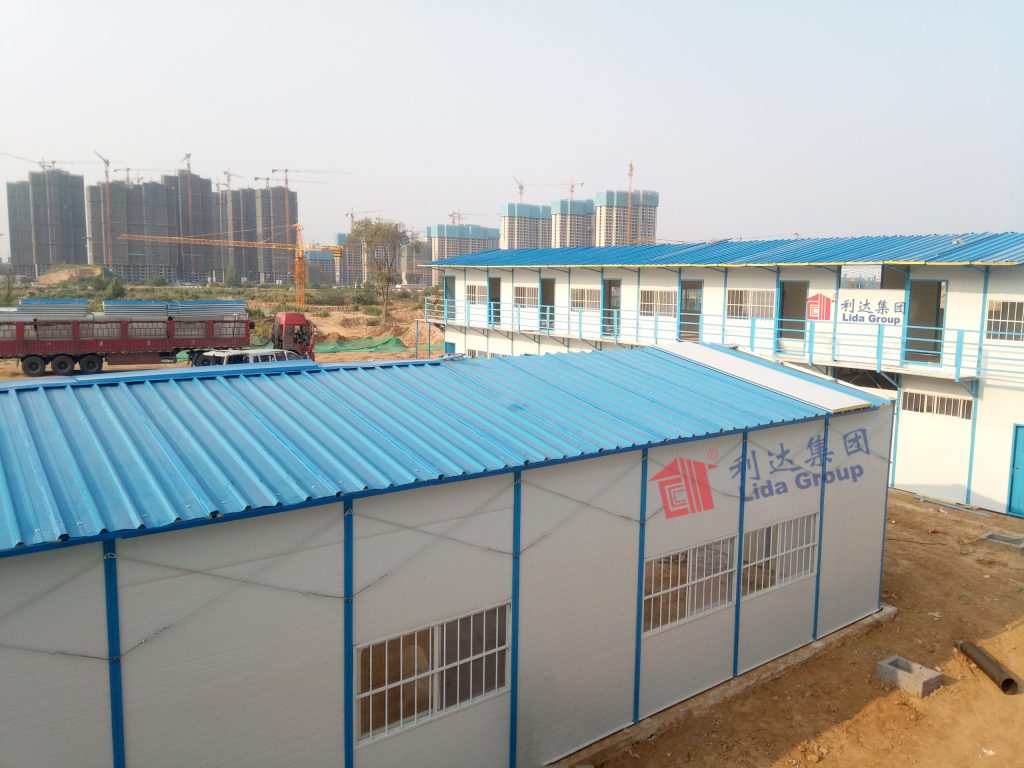
7. Advantages Over Traditional Hurricane Shelters
7.1 Superior Durability and Resistance
Compared to traditional hurricane shelters, Lida Group’s prefab sandwich panel shelters offer superior durability and resistance. The use of high-strength materials and engineered design ensures that they can withstand the extreme forces of hurricanes, including high winds, storm surges, and flying debris.
Traditional shelters, such as concrete bunkers, may be strong but are often expensive to build and difficult to relocate. Tents and makeshift structures, on the other hand, offer little protection and are prone to damage. Lida Group’s shelters strike a balance between strength and flexibility, providing a reliable solution that can be deployed quickly and easily.
7.2 Cost-Effectiveness
Lida Group’s hurricane-proof shelters are also cost-effective compared to traditional shelters. The prefabrication process reduces the cost of manufacturing, as components can be mass-produced in a factory. The rapid deployment process also reduces the cost of installation, as less time and labor are required on-site.
In the long run, the durability of the shelters means that they can be reused in multiple hurricane events, reducing the need for repeated investments in temporary shelters. This makes them a cost-effective solution for governments and relief organizations looking to prepare for and respond to hurricanes.
7.3 Flexibility and Versatility
The flexibility and versatility of Lida Group’s shelters are another key advantage. They can be deployed in a variety of locations and configured to meet different needs, making them suitable for a wide range of applications.
Traditional permanent shelters are fixed in location and cannot be easily adapted to changing needs. Temporary shelters, such as tents, are often limited in their functionality. Lida Group’s shelters, however, can be used as housing, medical clinics, command centers, or storage facilities, depending on the situation. Their mobility also allows them to be relocated as needed, ensuring that they are always in the right place at the right time.
7.4 Environmental Sustainability
Lida Group is committed to environmental sustainability, and their hurricane-proof shelters reflect this. The prefab sandwich panels are made from recyclable materials, and the manufacturing process is designed to minimize waste. The shelters are also energy-efficient, with insulation that reduces the need for heating and cooling, lowering energy consumption and reducing carbon emissions.
In addition, the ability to reuse the shelters in multiple events reduces the environmental impact of producing new shelters each time a hurricane strikes. This makes Lida Group’s shelters a more sustainable option compared to traditional shelters, which may be disposed of after a single use.
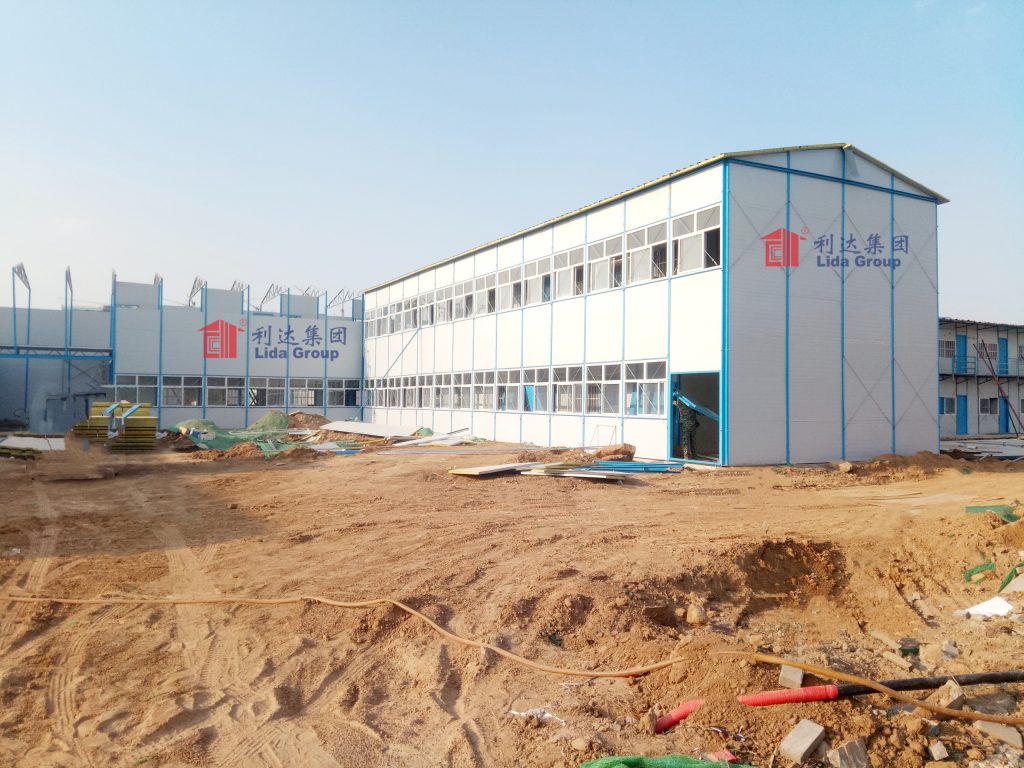
8. Challenges and Solutions in Deploying Hurricane-Proof Shelters
8.1 Funding and Resource Allocation
One of the main challenges in deploying hurricane-proof shelters is securing funding and allocating resources. The cost of purchasing and maintaining the shelters can be significant, especially for governments and relief organizations with limited budgets.
To address this, Lida Group works with a variety of partners, including governments, international organizations, and private donors, to secure funding for the deployment of shelters. The company also offers flexible financing options, such as leasing or rental agreements, to make the shelters more accessible to those in need.
In addition, the cost-effectiveness of the shelters in the long run, due to their durability and reusability, makes them a worthwhile investment for organizations looking to prepare for future hurricanes.
8.2 Coordination with Local Authorities and Relief Organizations
Deploying hurricane-proof shelters requires close coordination with local authorities and relief organizations. This includes identifying suitable deployment locations, ensuring that the shelters are integrated into the overall relief effort, and providing training to local personnel on the use and maintenance of the shelters.
Lida Group has established partnerships with local governments and relief organizations around the world to facilitate this coordination. The company works closely with these partners to understand the specific needs of each community and to develop deployment plans that are tailored to those needs. This ensures that the shelters are deployed in a way that is effective and efficient, and that they meet the needs of the local population.
8.3 Public Awareness and Acceptance
Another challenge is ensuring public awareness and acceptance of hurricane-proof shelters. Many people may be unfamiliar with these shelters and may be hesitant to use them, preferring to stay in their own homes or in more traditional shelters.
To address this, Lida Group and its partners conduct public awareness campaigns to educate people about the benefits of the shelters. This includes providing information about their durability, safety, and comfort, and demonstrating how they can be used in the event of a hurricane. The company also works with local communities to involve them in the deployment process, ensuring that their needs and concerns are addressed.
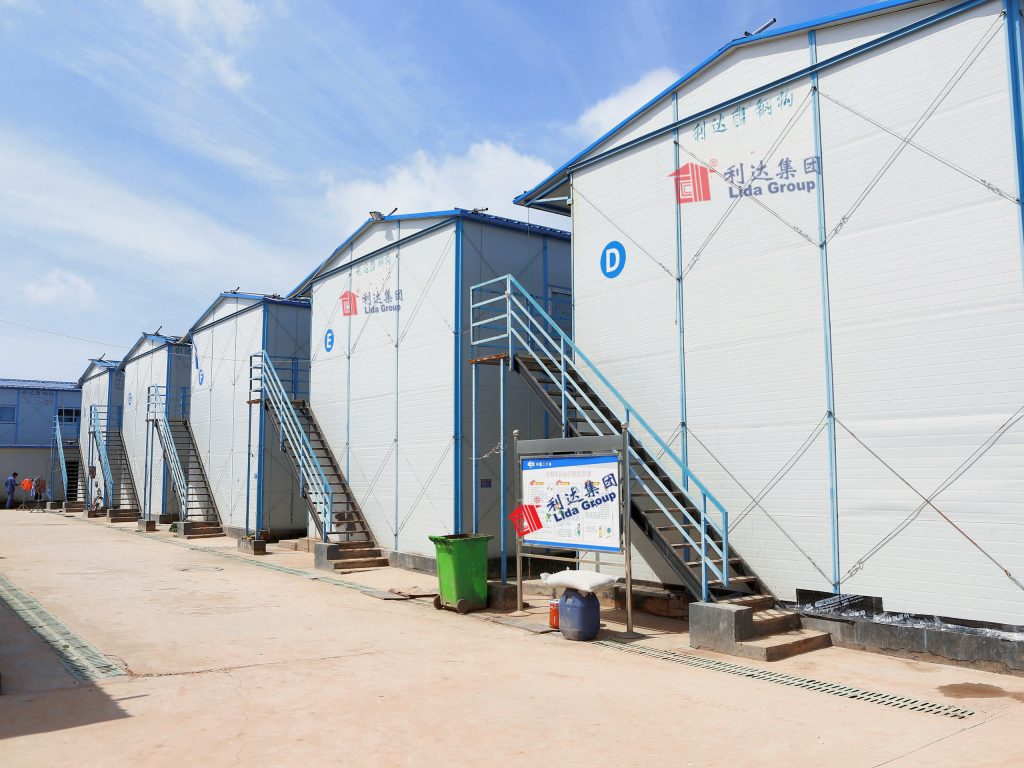
9. The Future of Hurricane-Proof Shelters: Innovations and Trends
9.1 Integration of Smart Technologies
The future of hurricane-proof shelters will see the integration of smart technologies to enhance their functionality and safety. This includes the use of sensors to monitor the structural integrity of the shelters, detect leaks, and measure temperature and humidity. Smart systems can also be used to manage energy consumption, ensuring that the shelters are as energy-efficient as possible.
In addition, communication technologies can be integrated into the shelters, allowing occupants to stay connected with the outside world and receive updates on the storm and
recovery efforts. For instance, built-in Wi-Fi or satellite communication systems can keep occupants informed, while emergency alert systems can send real-time warnings about potential aftershocks, flooding, or other hazards. These smart technologies not only enhance safety but also improve the overall experience of those staying in the shelters, reducing anxiety and isolation during a crisis.
9.2 Advancements in Material Science
Material science will play a crucial role in the evolution of hurricane-proof shelters. Researchers and manufacturers like Lida Group are exploring new materials that offer even greater strength, durability, and flexibility. For example, advanced composite materials, such as carbon fiber-reinforced polymers, could replace traditional steel in sandwich panel layers, reducing weight while increasing impact resistance. These materials are also more resistant to corrosion, making them ideal for coastal environments where saltwater exposure is a constant threat.
Self-healing materials are another area of exploration. These materials can repair small cracks or damage caused by debris impacts, extending the lifespan of the shelters and reducing maintenance needs. Additionally, phase-change materials integrated into the insulation core could help regulate internal temperatures more efficiently, reducing reliance on heating or cooling systems and improving energy efficiency.
9.3 Community-Driven Design and Local Adaptation
Future hurricane-proof shelters will increasingly incorporate community input to ensure they meet the unique cultural, social, and practical needs of the populations they serve. Lida Group and other organizations are recognizing that a one-size-fits-all approach is ineffective, especially in diverse regions with varying lifestyles and traditions.
For example, in communities where extended families live together, shelters may be designed with larger communal spaces to accommodate group living. In areas with specific religious practices, shelters could include dedicated spaces for prayer or rituals. Local climate considerations will also drive design adaptations—shelters in tropical regions may prioritize enhanced ventilation, while those in cooler climates will focus on advanced insulation. By involving local communities in the design process, shelters become more accepted and functional, ensuring they truly serve the people who need them most.
9.4 Scalability and Integration with Urban Planning
As urban populations in hurricane-prone areas grow, there is a need for hurricane-proof shelters to integrate seamlessly with urban planning. Lida Group is exploring ways to design shelters that can double as community centers, schools, or public facilities during non-emergency periods. This dual-use approach maximizes the value of the shelters, making them a permanent and integral part of the community rather than a temporary structure.
Scalability is another key focus. Modular designs will allow shelters to expand or contract based on the size of the disaster, ensuring that resources are used efficiently. For example, a small cluster of shelters could serve a neighborhood during a minor storm, while additional modules can be quickly added to accommodate thousands in the aftermath of a major hurricane. This flexibility ensures that communities are prepared for disasters of all magnitudes.
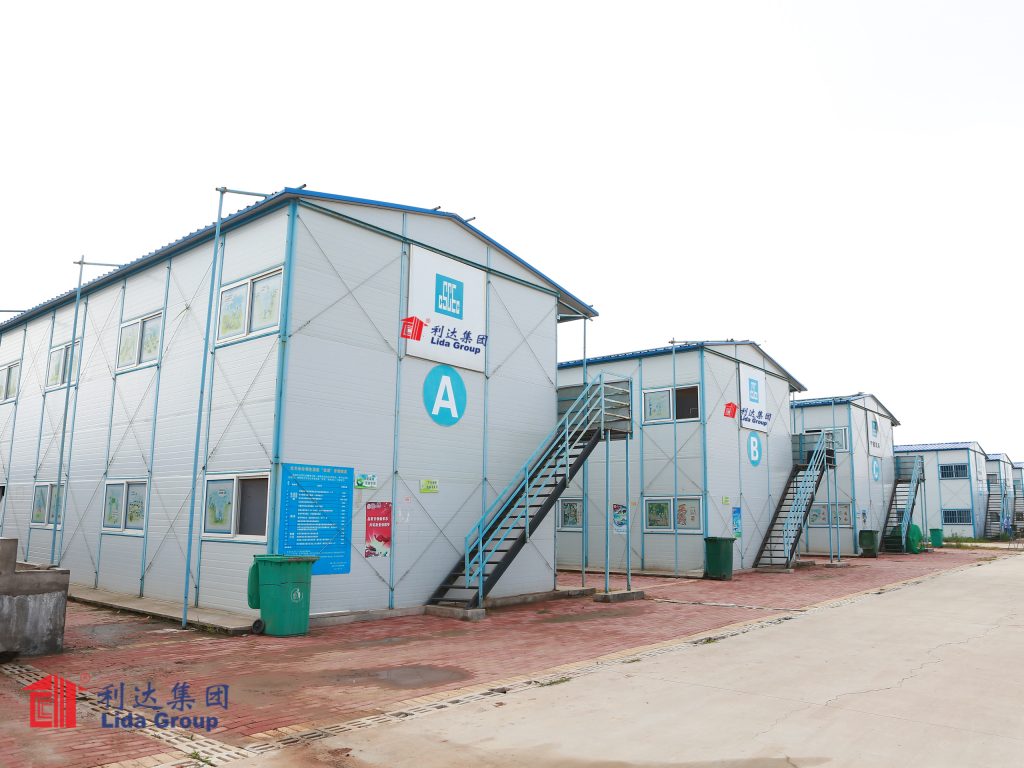
10. Conclusion
Lida Group’s hurricane-proof shelters, built with prefab sandwich panel construction, represent a significant advancement in disaster response and preparedness. These shelters address the critical shortcomings of traditional solutions by offering superior durability, rapid deployment, and essential amenities that protect and support survivors in the wake of hurricanes.
The key to their success lies in the innovative use of sandwich panels, which combine strength, insulation, and portability. Engineered to withstand extreme winds, storm surges, and debris impacts, these shelters provide a safe haven when traditional structures fail. Their modular design allows for quick assembly and customization, making them adaptable to diverse needs—whether housing families, serving as medical clinics, or acting as command centers for relief efforts.
Case studies from Hurricane Katrina, Hurricane Maria, and recent Caribbean storms demonstrate the real-world impact of these shelters. They not only save lives but also accelerate recovery by providing stability, reducing overcrowding in temporary facilities, and minimizing the spread of disease. The cost-effectiveness, environmental sustainability, and reusability of Lida Group’s shelters further solidify their role as a superior alternative to traditional hurricane housing.
Challenges such as funding, coordination, and public acceptance remain, but Lida Group’s partnerships with governments, relief organizations, and local communities are addressing these obstacles. By leveraging flexible financing, prioritizing communication, and involving communities in design, the company is ensuring that these shelters reach those who need them most.
Looking ahead, the future of hurricane-proof shelters is promising. Integrating smart technologies, advancing material science, embracing community-driven design, and integrating with urban planning will make these shelters even more effective, resilient, and valuable. As hurricanes continue to threaten vulnerable communities, Lida Group’s innovative approach stands as a model for how technology, engineering, and empathy can come together to protect lives and rebuild hope in the aftermath of disaster.
In a world where climate change is increasing the frequency and intensity of extreme weather events, hurricane-proof shelters are not just a necessity—they are a lifeline. Lida Group’s commitment to innovation ensures that this lifeline grows stronger, more accessible, and more responsive to the needs of communities worldwide, making the world a safer place for those at risk.
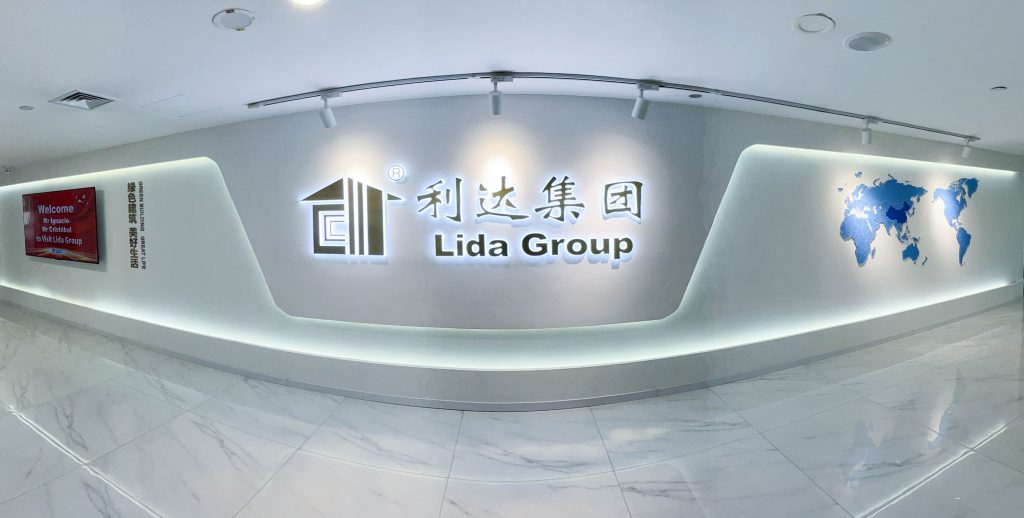
Related news
-
Arctic-Grade Innovation: Temporary Prefab Buildings Feature Lida Group's Insulated Sandwich Panels for Extreme Mobile Housing
2025-08-05 17:50:41
-
Why Refugee Camps Adopt Lida Group's Durable Temporary Prefab Buildings with High Quality Mobile House Amenities
2025-08-06 11:34:57
-
Lida Group Transforms Disaster Response with High Quality Mobile Houses Using Rapid Prefab Sandwich Panel Construction
2025-08-05 15:50:25
contact us
- Tel: +86-532-88966982
- Whatsapp: +86-13793209022
- E-mail: sales@lidajituan.com


